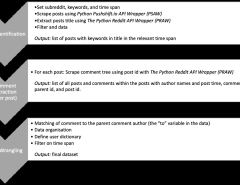CleanAI
Elevator Pitch: CleanAI revolutionizes AI development by offering a groundbreaking service to detect and mitigate data contamination in language models, ensuring their effectiveness and reliability. With CleanAI, developers and businesses can trust their AI applications to perform as intended, free from the risks of skewed or biased outcomes caused by contaminated training data.
Concept
A service that detects and mitigates data contamination in large language models (LLMs) to ensure their integrity and effectiveness.
Objective
To provide a solution for detecting data contamination in LLMs, ensuring the reliability and accuracy of these models for various applications.
Solution
Using a novel method that combines guided instruction with advanced metrics like ROUGE-L or BLEURT for assessing individual and partition-level data contamination.
Revenue Model
Subscription-based model for AI developers and companies, with pricing tiers based on usage and the size of the language models.
Target Market
AI research institutes, tech companies developing AI applications, and businesses relying on LLMs for data analysis, content generation, or customer interactions.
Expansion Plan
Initially targeting the tech and AI research sectors, followed by expansion into industries heavily reliant on AI for operations, such as finance, healthcare, and customer service.
Potential Challenges
Developing a robust detection mechanism that adapts to evolving LLM architectures, ensuring scalability for large datasets, and maintaining user trust.
Customer Problem
Ensuring the effectiveness, reliability, and unbiased behavior of LLMs by eliminating contamination from test datasets in their training data.
Regulatory and Ethical Issues
Compliance with data protection laws, ensuring the privacy of dataset contents, and navigating the ethical implications of modifying LLM training data.
Disruptiveness
Introducing a reliable, automated way to enhance the integrity of LLMs, potentially setting new industry standards for model training and evaluation.
Check out our related research summary: here.




Leave a Reply